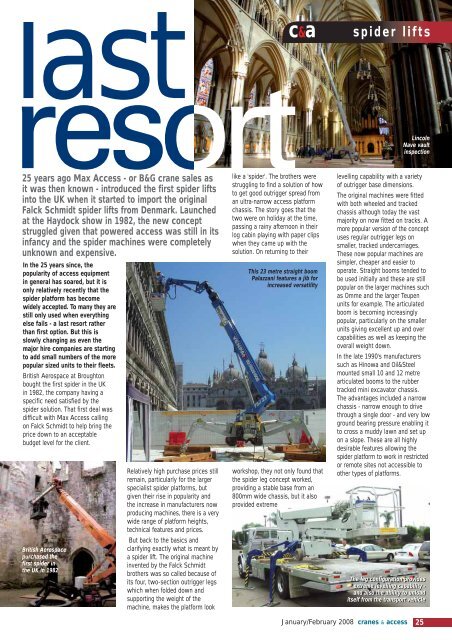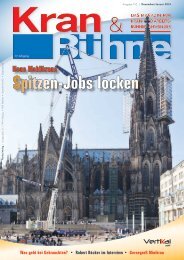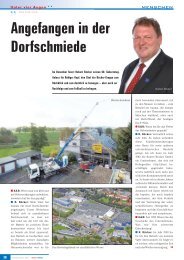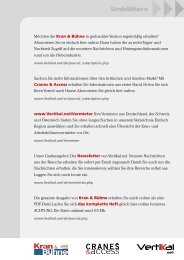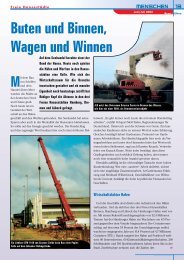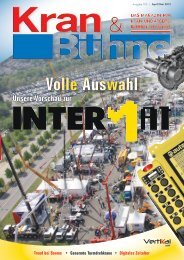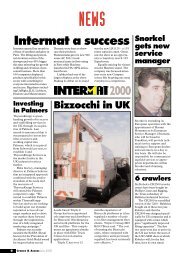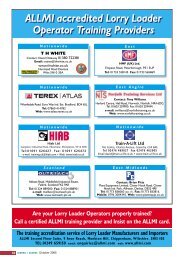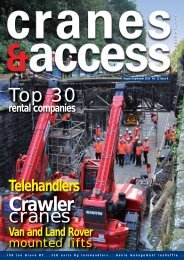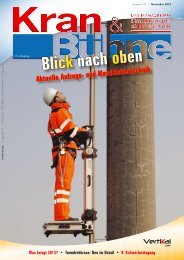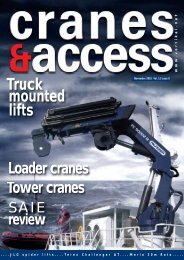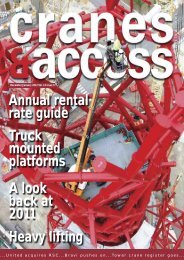You also want an ePaper? Increase the reach of your titles
YUMPU automatically turns print PDFs into web optimized ePapers that Google loves.
last<br />
25 years ago Max Access - or B&G crane sales as<br />
it was then known - introduced the first spider lifts<br />
into the UK when it started to import the original<br />
Falck Schmidt spider lifts from Denmark. Launched<br />
at the Haydock show in 1982, the new concept<br />
struggled given that powered access was still in its<br />
infancy and the spider machines were completely<br />
unknown and expensive.<br />
In the 25 years since, the<br />
popularity of access equipment<br />
in general has soared, but it is<br />
only relatively recently that the<br />
spider platform has become<br />
widely accepted. To many they are<br />
still only used when everything<br />
else fails - a last resort rather<br />
than first option. But this is<br />
slowly changing as even the<br />
major hire companies are starting<br />
to add small numbers of the more<br />
popular sized units to their fleets.<br />
British Aerospace at Broughton<br />
bought the first spider in the UK<br />
in 1982, the company having a<br />
specific need satisfied by the<br />
spider solution. That first deal was<br />
difficult with Max Access calling<br />
on Falck Schmidt to help bring the<br />
price down to an acceptable<br />
budget level for the client.<br />
British Aerospace<br />
purchased the<br />
first spider in<br />
the UK in 1982<br />
Relatively high purchase prices still<br />
remain, particularly for the larger<br />
specialist spider platforms, but<br />
given their rise in popularity and<br />
the increase in manufacturers now<br />
producing machines, there is a very<br />
wide range of platform heights,<br />
technical features and prices.<br />
But back to the basics and<br />
clarifying exactly what is meant by<br />
a spider lift. The original machine<br />
invented by the Falck Schmidt<br />
brothers was so called because of<br />
its four, two-section outrigger legs<br />
which when folded down and<br />
supporting the weight of the<br />
machine, makes the platform look<br />
c&a<br />
like a 'spider'. The brothers were<br />
struggling to find a solution of how<br />
to get good outrigger spread from<br />
an ultra-narrow access platform<br />
chassis. The story goes that the<br />
two were on holiday at the time,<br />
passing a rainy afternoon in their<br />
log cabin playing with paper clips<br />
when they came up with the<br />
solution. On returning to their<br />
This 23 metre straight boom<br />
Palazzani features a jib for<br />
increased versatility<br />
workshop, they not only found that<br />
the spider leg concept worked,<br />
providing a stable base from an<br />
800mm wide chassis, but it also<br />
provided extreme<br />
spider lifts<br />
January/February 2008 cranes & access<br />
Lincoln<br />
Nave vault<br />
inspection<br />
levelling capability with a variety<br />
of outrigger base dimensions.<br />
The original machines were fitted<br />
with both wheeled and tracked<br />
chassis although today the vast<br />
majority on now fitted on tracks. A<br />
more popular version of the concept<br />
uses regular outrigger legs on<br />
smaller, tracked undercarriages.<br />
These now popular machines are<br />
simpler, cheaper and easier to<br />
operate. Straight booms tended to<br />
be used initially and these are still<br />
popular on the larger machines such<br />
as Omme and the larger Teupen<br />
units for example. The articulated<br />
boom is becoming increasingly<br />
popular, particularly on the smaller<br />
units giving excellent up and over<br />
capabilities as well as keeping the<br />
overall weight down.<br />
In the late 1990's manufacturers<br />
such as Hinowa and Oil&Steel<br />
mounted small 10 and 12 metre<br />
articulated booms to the rubber<br />
tracked mini excavator chassis.<br />
The advantages included a narrow<br />
chassis - narrow enough to drive<br />
through a single door - and very low<br />
ground bearing pressure enabling it<br />
to cross a muddy lawn and set up<br />
on a slope. These are all highly<br />
desirable features allowing the<br />
spider platform to work in restricted<br />
or remote sites not accessible to<br />
other types of platforms.<br />
The leg configuration provides<br />
extreme levelling capability -<br />
and also the ability to unload<br />
itself from the transport vehicle<br />
25


